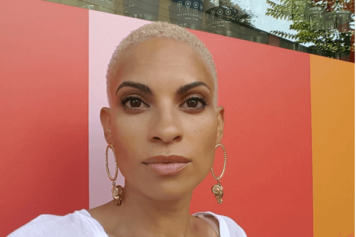
Nina Simone’s oldest living brother was the point of contact for the former owner of her childhood home, who had to sell his truck to install vintage windows in the southern dwelling. (Roland Godefroy/Wikipedia Commons)
The home where singer and civil rights activist Nina Simone was born was nearly lost to weathering and time until four Black artists saved it with a $95,000 purchase.
Painter Rashid Johnson, sculptor Adam Pendleton, abstract painter Julie Mehretu and collagist and filmmaker Ellen Gallagher recognized the value of the Tryon, N.C., house and told The New York Times making the bid was an act of art and politics, raising Simone as a pillar of activism in a climate of continuing racial tension.
“It wasn’t long after the election that this all began to happen,” Johnson told the newspaper. “And I was desperate, like a lot of people, to be engaged and this felt like exactly the right way. My feeling when I learned that this house existed was just an incredible urgency to make sure it didn’t go away.”
The artists discovered the home at 30 East Livingston St. after Museum of Modern Art Curator Laura Hoptman got in touch with Pendleton.
“It took me about five seconds to know what I wanted to do,” Pendelton, whose work, like Gallagher and Johnson’s, regularly showcases race and politics, said. “And I called Rashid and we talked and we knew we wanted to get women artists involved, and it all happened very quickly. We don’t have a blueprint for our ideas yet, but I think sometimes artists are the best people to deal with really tricky questions — like, for instance, how to honor the legacy of someone as vital and complicated as Nina Simone.”
Former Polk County economic developer Kevin “Kipp” McIntyre was the previous owner of the 660-square-foot home and paid $100,000 for it in 2005 before money woes pushed it out of his possession.
“There are folks here who really don’t want the story told because it’s still felt that Nina Simone did the town a disservice by turning her back on it,” said McIntyre, who outfitted the home with 1930s furnishings hoping to turn it into a museum. In Simone’s lifetime, she occasionally opened up about the racism in Tryon, but she most notably did so in her music. By expressing her anger at her hometown, resentment among locals built and some say it never left.
“We just hope we can activate this place,” Gallagher said. “[Simone] formed a lot of who I am and my sense of history. And I think of the town as a portal to a woman who influenced so many.”

